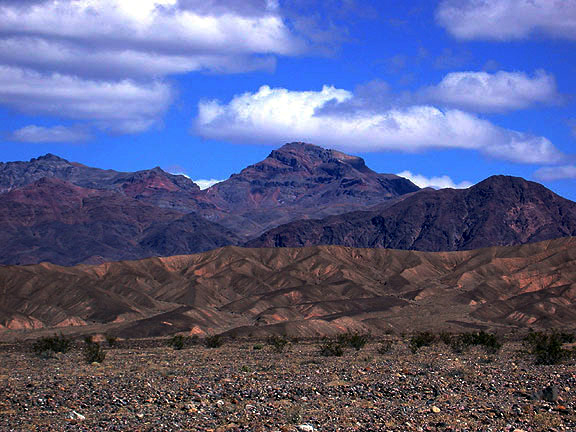
| Here is a view northeastward from State Route 190, several miles north of Furnace Creek Ranch, to prominent Corkscrew Peak, which is the tallest peak at slightly upper center of the photograph. Corkscrew Peak derives its name from the twisting, corkscrew-like exposures of the Lower Cambrian Corkscrew Quartzite (one of my very favorite geological rock formation names, by the way) that outcrop along the middle to upper slopes. The lower, slope-forming portion of the peak is composed of the Lower Cambrian Daylight Formation (or Wood Canyon Formation, as preferred by some stratigraphers--the Wood Canyon can definitely be correlated with the Daylight Formation; that is, they are of the same geologic age); the summit has been carved in the Lower to Middle Cambrian Carrara Formation, a rock unit which yields locally abundant trilobites, algal bodies, plus invertebrate tracks and trails. |